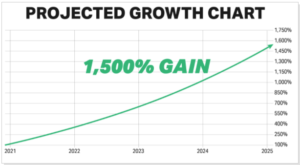Original Post: yahoo.com
Here's a revealing data point: older Americans are scared more of outliving wealth than of death itself.
And retirees have good reason to be worried about making their assets last. People are living longer, so that money has to cover a longer period. Making matters worse, income generated using tried-and-true retirement planning approaches may not cover expenses these days. That means seniors must dip into principal to meet living expenses.
Your parents' retirement investing plan won't cut it today.
For many years, bonds or other fixed-income assets could produce the yield needed to provide solid income for retirement needs. However, these yields have dwindled over time: 10-year Treasury bond rates in the late 1990s were around 6.50%, but today, that rate is a thing of the past, with a slim likelihood of rates making a comeback in the foreseeable future.
The impact of this rate decline is sizable: over 20 years, the difference in yield for a $1 million investment in 10-year Treasuries is more than $1 million.
And lower bond yields aren't the only potential problem seniors are facing. Today's retirees aren't feeling as secure as they once did about Social Security, either. Benefit checks will still be coming for the foreseeable future, but based on current estimates, Social Security funds will run out of money in 2035.
Unfortunately, it looks like the two traditional sources of retirement income – bonds and Social Security – may not be able to adequately meet the needs of present and future retirees. But what if there was another option that could provide a steady, reliable source of income in retirement?
Invest in Dividend Stocks
Dividend-paying stocks from low-risk, high-quality companies are a smart way to generate steady and reliable attractive income streams to replace low risk, low yielding Treasury and bond options.
Look for stocks that have paid steady, increasing dividends for years (or decades), and have not cut their dividends even during recessions.
One way to identify suitable candidates is to look for stocks with an average dividend yield of 3%, and positive average annual dividend growth. Many stocks increase dividends over time, helping to offset the effects of inflation.
Here are three dividend-paying stocks retirees should consider for their nest egg portfolio.
Amgen (AMGN) is currently shelling out a dividend of $2.13 per share, with a dividend yield of 3.36%. This compares to the Medical – Biomedical and Genetics industry's yield of 0% and the S&P 500's yield of 1.76%. The company's annualized dividend growth in the past year was 9.79%. Check Amgen (AMGN) dividend history here>>>
Bristol Myers Squibb (BMY) is paying out a dividend of $0.57 per share at the moment, with a dividend yield of 3.22% compared to the Medical – Biomedical and Genetics industry's yield of 0% and the S&P 500's yield. The annualized dividend growth of the company was 5.56% over the past year. Check Bristol Myers Squibb (BMY) dividend history here>>>
Currently paying a dividend of $1.4 per share, Mid-America Apartment Communities (MAA) has a dividend yield of 3.73%. This is compared to the REIT and Equity Trust – Residential industry's yield of 3.89% and the S&P 500's current yield. Annualized dividend growth for the company in the past year was 28.74%. Check Mid-America Apartment Communities (MAA) dividend history here>>>
But aren't stocks generally more risky than bonds?
It is true that stocks, as an asset class, carry more risk than bonds, but high-quality dividend stocks not only have the ability to produce income growth over time but more importantly, can also reduce your overall portfolio volatility relative to the broader stock market.
Combating the impact of inflation is one advantage of owning these dividend-paying stocks. Here's why: many of these stable, high-quality companies increase their dividends over time, which translates to rising dividend income that offsets the effects of inflation.
Thinking about dividend-focused mutual funds or ETFs? Watch out for fees.
If you're thinking, “I want to invest in a dividend-focused ETF or mutual fund,” make sure to do your homework. It's important to know that some mutual funds and specialized ETFs charge high fees, which may diminish your dividend gains or income and thwart the overall objective of this investment strategy. If you do want to invest in fund, research well to identify the best-quality dividend funds with the least charges.
Bottom Line
Seeking steady, consistent income through dividends can be a smart option for financial security in retirement, whether you invest in mutual funds, ETFs, or in dividend-paying stocks.











